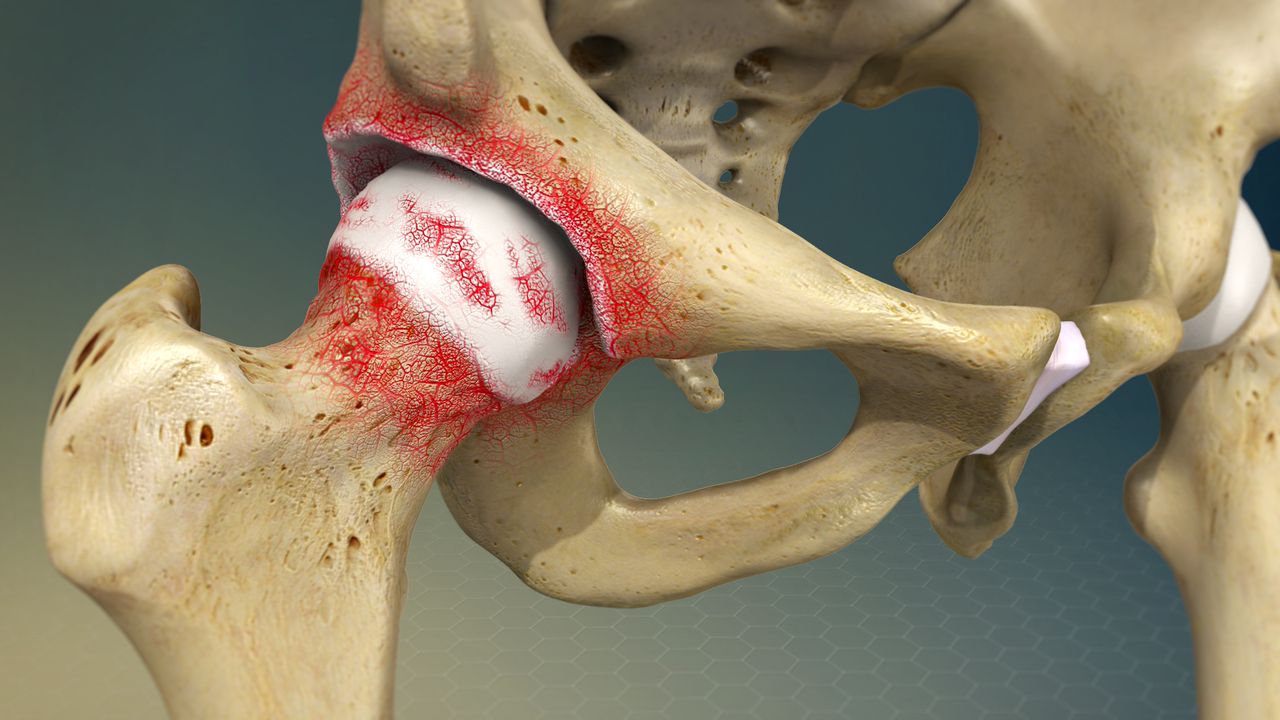 Hip arthritis is a condition characterized by inflammation, pain, and stiffness in the hip joint due to the wearing down of cartilage that cushions the bones in the joint. It is a type of osteoarthritis, which is the most common form of arthritis.
Hip arthritis is a condition characterized by inflammation, pain, and stiffness in the hip joint due to the wearing down of cartilage that cushions the bones in the joint. It is a type of osteoarthritis, which is the most common form of arthritis.
Key points about hip arthritis include:
-
Symptoms: Common symptoms of hip arthritis include pain in the hip or groin area, stiffness, decreased range of motion, and difficulty walking or performing daily activities.
-
Causes: Hip arthritis typically develops over time due to the natural aging process, wear and tear on the joint, or as a result of previous hip injuries or trauma.
-
Risk Factors: Factors that may increase the risk of developing hip arthritis include advancing age, genetics, obesity, previous hip injuries, repetitive stress on the hip joint (such as in certain occupations or sports), and certain medical conditions like rheumatoid arthritis.
-
Diagnosis: Diagnosis of hip arthritis usually involves a physical examination by a healthcare professional, along with imaging tests such as X-rays or MRI scans to assess the extent of joint damage.
-
Treatment: Treatment for hip arthritis aims to relieve pain, improve joint function, and delay the progression of the disease. Treatment options may include lifestyle modifications (such as weight loss and exercise), physical therapy, pain medications, corticosteroid injections, viscosupplementation (injection of lubricating fluid into the joint), and in severe cases, surgical interventions like hip replacement surgery.
-
Lifestyle Modifications: Certain lifestyle changes can help manage symptoms and improve hip arthritis, such as maintaining a healthy weight, engaging in low-impact exercises like swimming or cycling, using assistive devices (like canes or walkers) to reduce joint stress, and avoiding activities that worsen pain.
-
Surgical Options: If conservative treatments are ineffective and the pain and functional limitations significantly impact daily life, surgical interventions such as hip replacement surgery may be considered. During hip replacement surgery, the damaged parts of the hip joint are replaced with artificial components made of metal, plastic, or ceramic.
It’s important for individuals experiencing symptoms of hip arthritis to consult with a healthcare professional for an accurate diagnosis and appropriate treatment plan tailored to their specific needs and circumstances. Early intervention and management can help improve outcomes and quality of life for those living with hip arthritis.
